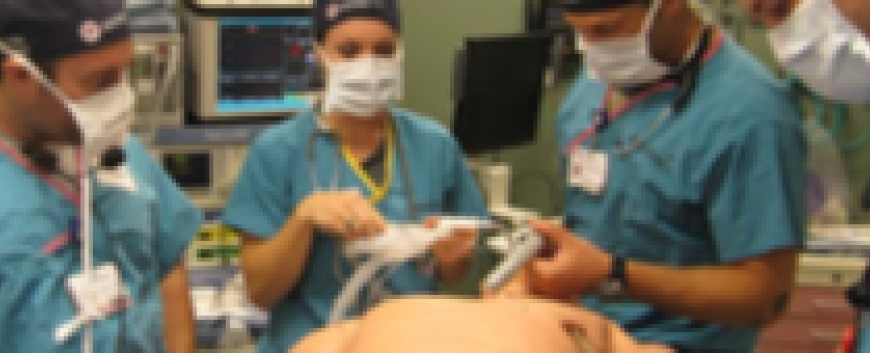The Anesthesia Care Team (ACT) by JC Lydon, MD
This being my inaugural blog entry,I would like to explain how your anesthetic care is delivered when you present to one of our facilities for your surgery or procedure. The BPA Anesthesia Division is comprised of 27 physician anesthesiologists, 45 full- and part time Certified Registered Nurse Anesthetists (CRNAs) and 6 certified Anesthesiologist Assistants (AA-Cs).
First, some background on the specialty of anesthesiology. “Anesthesiology is the practice of medicine, including preoperative patient evaluation, anesthetic planning, intraoperative and postoperative care, and the management of systems and personnel that support these activities.” (Source: American Society of Anesthesiologists Statement on the Anesthesia Care Team). Additionally, our presence extends into the realms of acute and chronic pain management, perioperative consultations services, pain management on the obstetrical ward, and timely intervention in the critical care units on an “as needed” basis. All of these activities are either personally provided, or directed, by a physician anesthesiologist.
When care in any of these domains is provided by a non -physician anesthesia provider directed by an anesthesiologist, this mode of anesthesia delivery is termed the Anesthesia Care Team model. This model involves the delegation of appropriate tasks by the physician to non-physicians. In the ACT model, overall responsibility for the patient’s care and safety rests with the anesthesiologist.
Core Members of the Anesthesia Care Team
a. PHYSICIANS
The physician anesthesiologist is designated as the Director of the ACT: a physician licensed to practice medicine, either a MD or a DO, who has successfully completed a training program in anesthesiology accredited by the ACGME or the American Osteopathic Association.
b. ANESTHETISTS
NURSE ANESTHETIST: An advanced registered nurse practitioner who has satisfactorily completed an accredited nurse anesthesia training program and certifying exam (Certified Registered Nurse Anesthetist, or CRNA)
ANESTHESIOLOGIST ASSISTANT: An advanced level health professional who has satisfactorily completed an accredited anesthesiologist assistant program and certifying exam (AA-C).
If you are reading this blog, you are probably most interested in how your procedure will be handled. This is best described by referring to the ASA statement on the ACT. “The management of an anesthetic is dependent on many factors including the unique medical conditions of individual patients and the procedures being performed. Anesthesiologists will determine which perioperative tasks, if any, may be delegated. The anesthesiologist may delegate specific tasks to qualified non-anesthesiologist members of the ACT providing that quality of care and patient safety are not compromised, but will participate in critical parts of the anesthetic, and will remain immediately available for management of emergencies regardless of the type of anesthetic. Therefore, you may rest assured that even though the physician anesthesiologist may not be present for 100% of the duration of your anesthetic, s/he remains fully engaged in your care directly through the proxy of the extremely competent anesthetists under his or her direct supervision.
“Given the shared goal of patient safety, the ACT approach is an excellent example of coordinated care among many disciplines, and the safety of modern anesthesia speaks to this achievement.” (Source: Anesthesiologist Kraig S. de Lanzac, MD).
Look for future topics on this site to address some specific concerns that patients have expressed to me over 30 years of practice, such as the problem of awareness under anesthesia, risks of anesthesia in children, and cognitive deficits after surgery in the elderly population.
JC Lydon MD
Physician Anesthesiologist with BPA-AD




